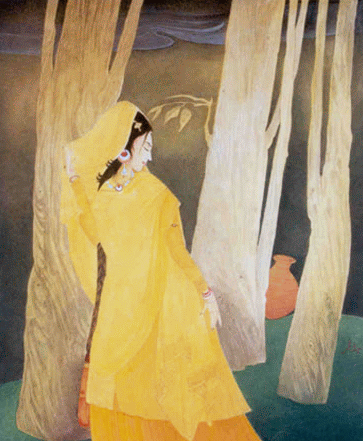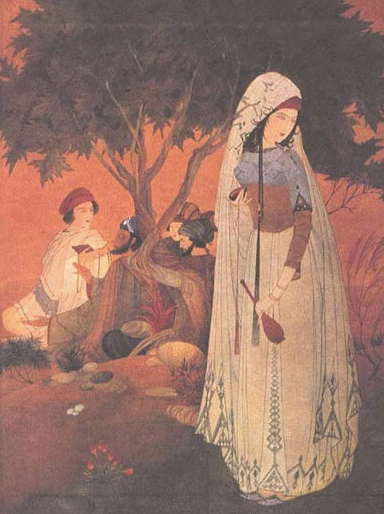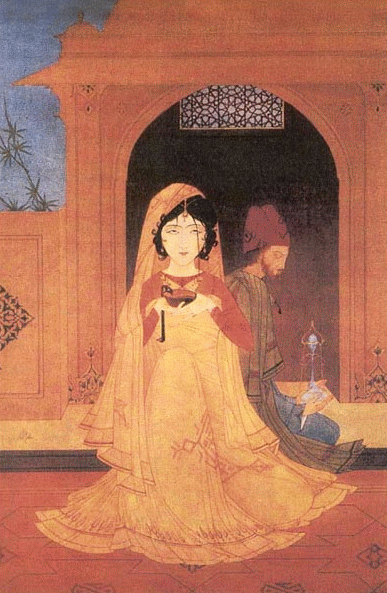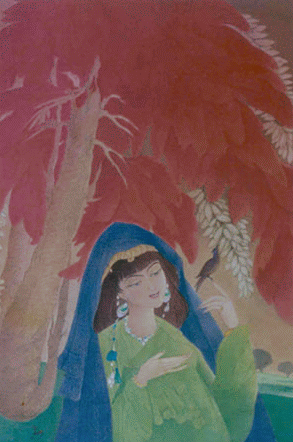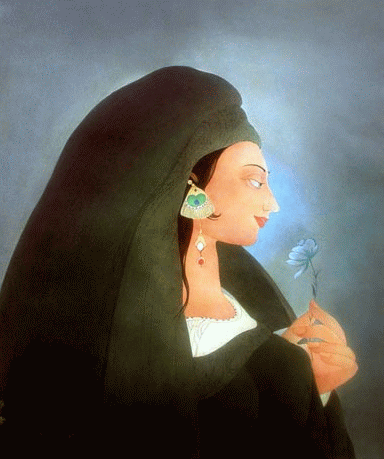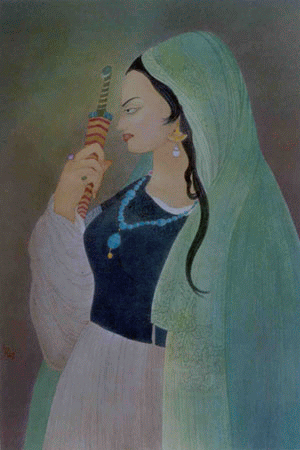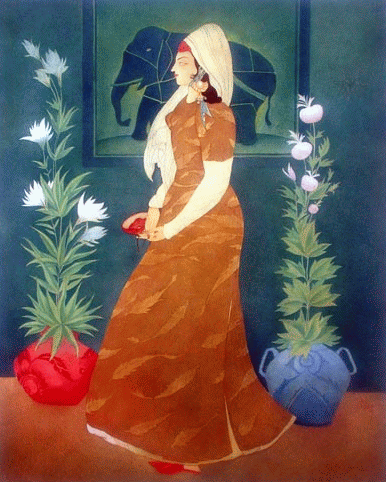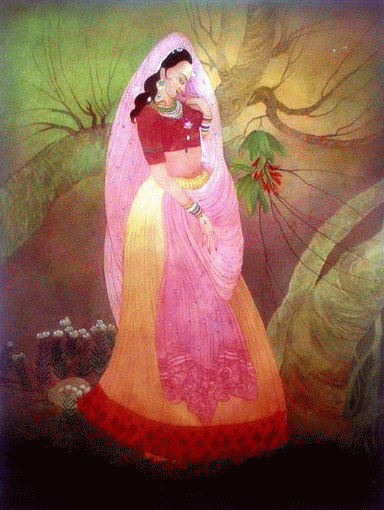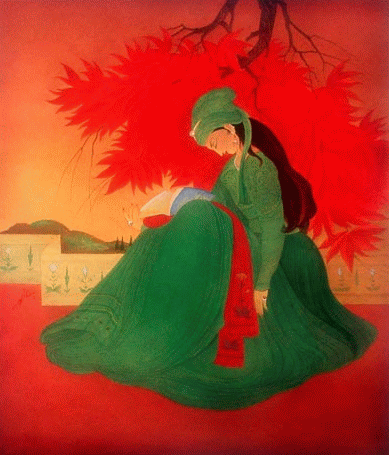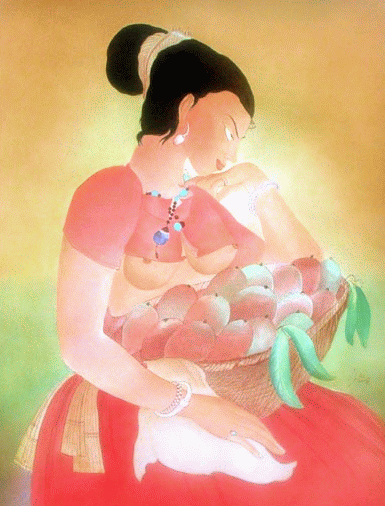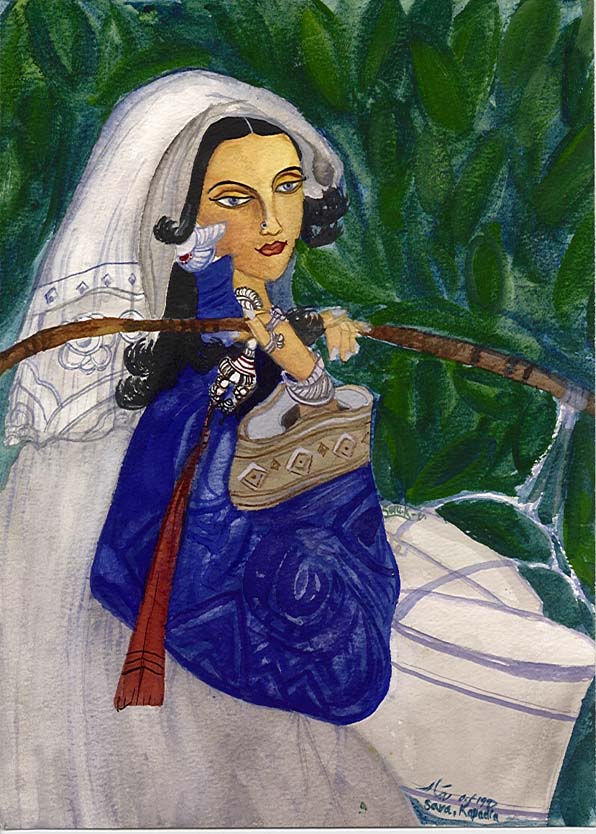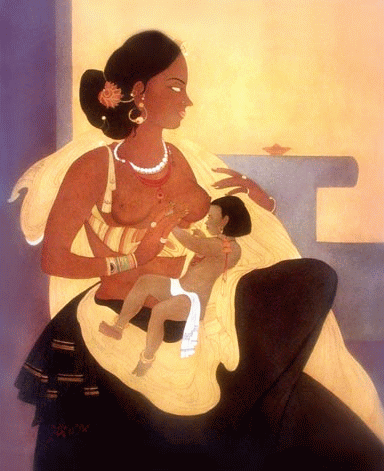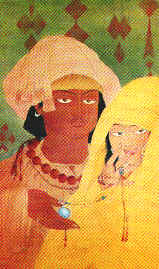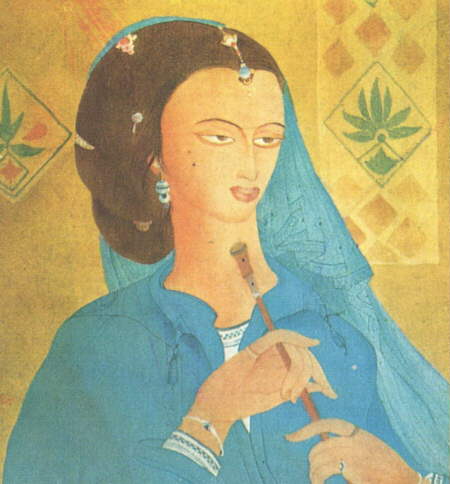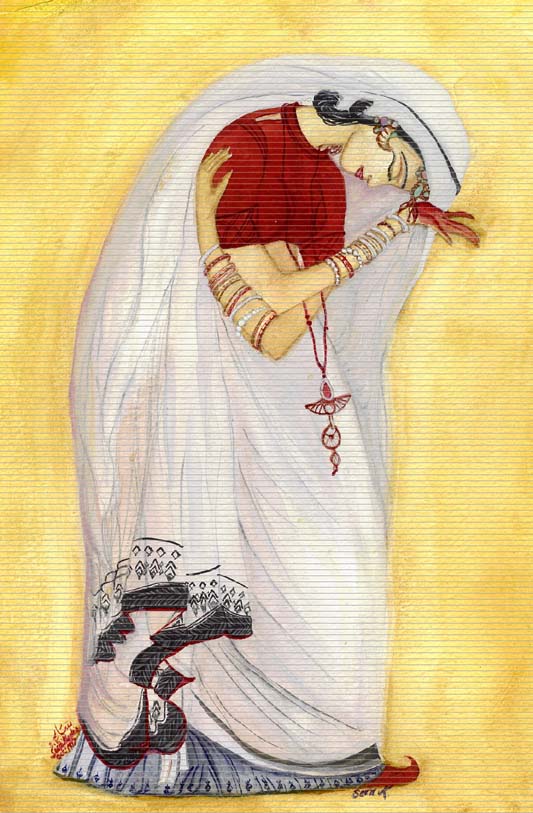
Abdul Rehman Chughtai
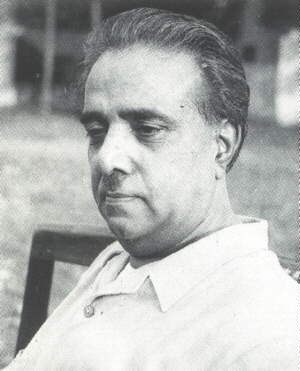
The Watercolour
Man
Talking of water colours and name of Abdul Rehman Chughtai would be the first one
would come to forth and perhaps the only one. His paintings are so close to reality with natural colours that one is
simply spell bound and lost into the beautiful colours and brush strokes.
Chughtai was born on 21st September 1894 in Lahore. His lineage can be traced
back to a family responsible for the architectural designs of Taj Mahal in Agra
and Jamaa Masjid and Lal Qila in Delhi.
Chughtai was educated at the famous Mayo School of Art, Lahore (now the National College of Arts), studied under Abanindranath Tagore and Printmaking in London. He was also Head-instructor in Chromo-Lithography at the Mayo School of Art, Lahore. Chughtai exhibited with the Punjab Fine Art Society, Lahore (1920) and the Indian School of Oriental Art during the 1920s. During the late 1930s, Chughtai's work contributed greatly to the energetic modern art scene that was burgeoning in pre-partition Lahore.
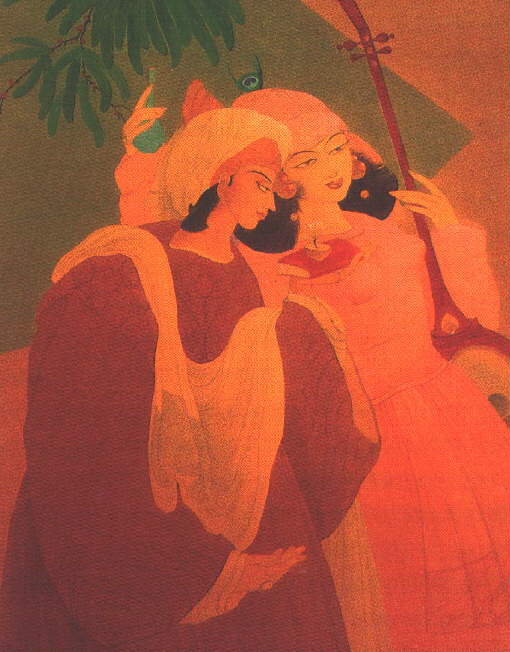
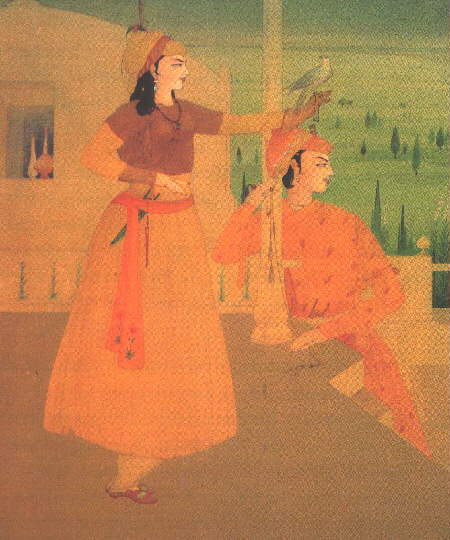

"Lonely Lady" - "Jahanghir and Empress Noor Jahan"
- "Omar Khayam"
In keeping with the revivalist spirit of the New Bengal School, he sought inspiration from the Mughal Miniature and the "Naqsh" or patterns of the Islamic decorative arts. Referring to his painting. Chughtai writes, "These humble creations are redolent of those old days when we were making efforts to live and dream with the brethren of this land...this background of my art should not be lost sight of."
"Muraqqa-e-Chughai" is a rare publication in which Chughtai transformed
the poetry of great Urdu poet Asad Ullah Khan Ghalib with his brilliant skilful
strokes and elegant art-work. Here the heights of literature seems to have been
transformed into a the finest piece of art, specially the unparalleled water-colours
of Chughtai. The verses of Ghalib and their illustrations by Chughtai provide a
symmetrical effect. Perhaps no one else could have done justice to Ghalib's
poetry other than Chughtai - in fact no one ever dared.
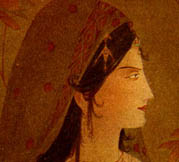
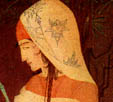
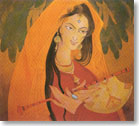
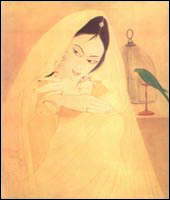


Chughtai also designed the first indigenous Pakistani stamp that was issued almost a year later in July 1948, printed for Pakistan. The 1 Re stamp above beautifully engraved with Urdu inscription reading "Long Live Pakistan" was thus the first stamp. Chughtai also designed a number of postage stamps of Pakistan from 1949 to 1960s.
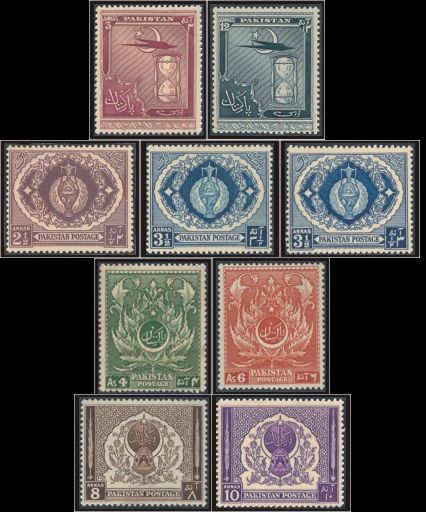
On the independence day of 1951, he produced a set of 9 stamps, internationally known as Chughtai Art set, was considered as the most beautiful stamps of the world at that time.
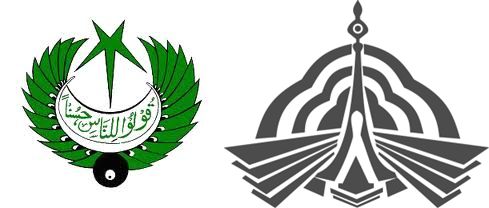
He also designed the emblems of Pakistan Television (PTV) and Radio Pakistan which are still the official monograms of both the National TV and Radio channel. Besides painting, he was also a short story writer of considerable merit and 2 collections of his short stories have been published.
Abdul Rehman Chughtai died on 17th January, 1975 in Lahore.
View slide show of Chughtai's master strokes
